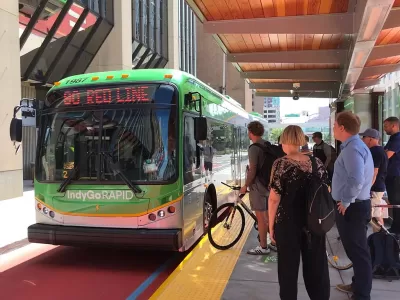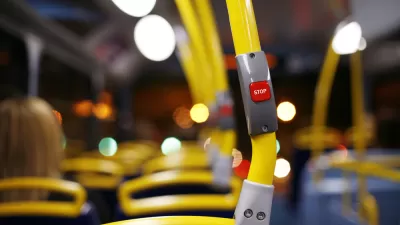An organization successfully balanced the tension between expanding rail line service and improving bus service, and ensuring race was at the forefront of the conversation.

In 2016, an Indianapolis-based faith organization launched a successful campaign to bring more funding to the mass transit system in Marion County. Shelterforce’s Miriam Axel-Lute talks with Nicole Barnes of Faith in Indiana about why the organization focused on transit improvements, how they balanced the tension between expanding rail line service and improving bus service, and how race had to be at the forefront.
Miriam Axel-Lute: Why did IndyCAN (now Faith in Indiana) pick transit improvements as a goal?
Nicole Barnes: Transit was something that we believe was imperative for the work that we do. It aligns with our mission, which is to empower and give diverse communities the opportunity to work together. We want to serve as a catalyst for the marginalized and for faith communities so they can act together for racial and economic equity. Transit absolutely fit in racial and economic equity. When we started digging into the research, we saw how lack of transportation contributed greatly to poverty.
We had this opportunity to get transit on the ballot in 2016. Our leaders and our people [agreed that] this is something that will not just improve the city economically, but will also improve our communities from a racial standpoint [and] from an economic development standpoint. That campaign beautifully embodied our mission, which is to get people from all sides to work together toward something good.
We called this campaign “Ticket to Opportunity.” Even in our choice of what we called it, it [was clear it] wasn’t just about transit, but transit as an opportunity for people to get out of the circumstances that they were in. ...
FULL STORY: The Ticket to Opportunity

Alabama: Trump Terminates Settlements for Black Communities Harmed By Raw Sewage
Trump deemed the landmark civil rights agreement “illegal DEI and environmental justice policy.”

Planetizen Federal Action Tracker
A weekly monitor of how Trump’s orders and actions are impacting planners and planning in America.

The 120 Year Old Tiny Home Villages That Sheltered San Francisco’s Earthquake Refugees
More than a century ago, San Francisco mobilized to house thousands of residents displaced by the 1906 earthquake. Could their strategy offer a model for the present?

Ken Jennings Launches Transit Web Series
The Jeopardy champ wants you to ride public transit.

BLM To Rescind Public Lands Rule
The change will downgrade conservation, once again putting federal land at risk for mining and other extractive uses.

Indy Neighborhood Group Builds Temporary Multi-Use Path
Community members, aided in part by funding from the city, repurposed a vehicle lane to create a protected bike and pedestrian path for the summer season.
Urban Design for Planners 1: Software Tools
This six-course series explores essential urban design concepts using open source software and equips planners with the tools they need to participate fully in the urban design process.
Planning for Universal Design
Learn the tools for implementing Universal Design in planning regulations.
Clanton & Associates, Inc.
Jessamine County Fiscal Court
Institute for Housing and Urban Development Studies (IHS)
City of Grandview
Harvard GSD Executive Education
Toledo-Lucas County Plan Commissions
Salt Lake City
NYU Wagner Graduate School of Public Service




























